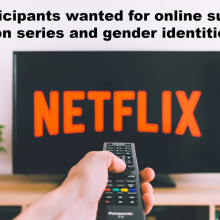Leveraging Media for Gender Equality Education: Insights from the GEMINI Project

The GEMINI project, funded under the European Union's CERV Programme, is a significant initiative aiming to enrich educational practices with tools that foster discussions on gender equality. The project's approach involves the use of focus groups, media content, and direct engagement with students to explore and influence perceptions and attitudes towards gender norms and roles.
Impact of Media on Youth Perception
Media, particularly serial dramas and movies, holds a profound influence on young individuals' perceptions of societal norms and roles. The GEMINI project's focus on serial dramas as a medium to discuss and dissect gender stereotypes offers a practical avenue for educators to engage students in meaningful dialogues. As depicted in the GEMINI focus group findings, students from diverse backgrounds show varying engagements with media, which reflects their socio-economic backgrounds and inherent cultural norms. The use of popular media in educational settings can thus bridge theoretical gender equality discussions with real-world applications and visual representations.
Gender Representation in Media
Serial dramas often mirror societal views and, simultaneously, shape them. The project highlights that different genders are shown to gravitate towards genres that reinforce traditional gender roles—girls towards romance and boys towards action-oriented content. This dichotomy presents an opportunity for educators to challenge these norms by introducing media content that breaks these stereotypes, promoting a more nuanced understanding of gender fluidity and equality.
Educational Toolkit Development
Building on the insights from focus groups, the GEMINI project can develop educational toolkits that incorporate media literacy as a core component. These toolkits can help students critically analyze media content, understand the construction of gender in media, and explore the impact of these constructions on their perception of gender roles.
Challenges and Opportunities
The focus group discussions also shed light on the resistance to gender equality concepts, particularly among students from more conservative backgrounds. This resistance is often fueled by a lack of familiarity with gender diversity and rights, which can be addressed through carefully curated media content that is inclusive and representative of various genders and sexual orientations.
Future Directions
The project should consider expanding its toolkit to include interactive components such as student-driven media creation, where students can create their own serial dramas or narratives that reflect their understanding of gender equality. This participatory approach can empower students, giving them the tools to express and critique gender roles through a medium they find engaging.



